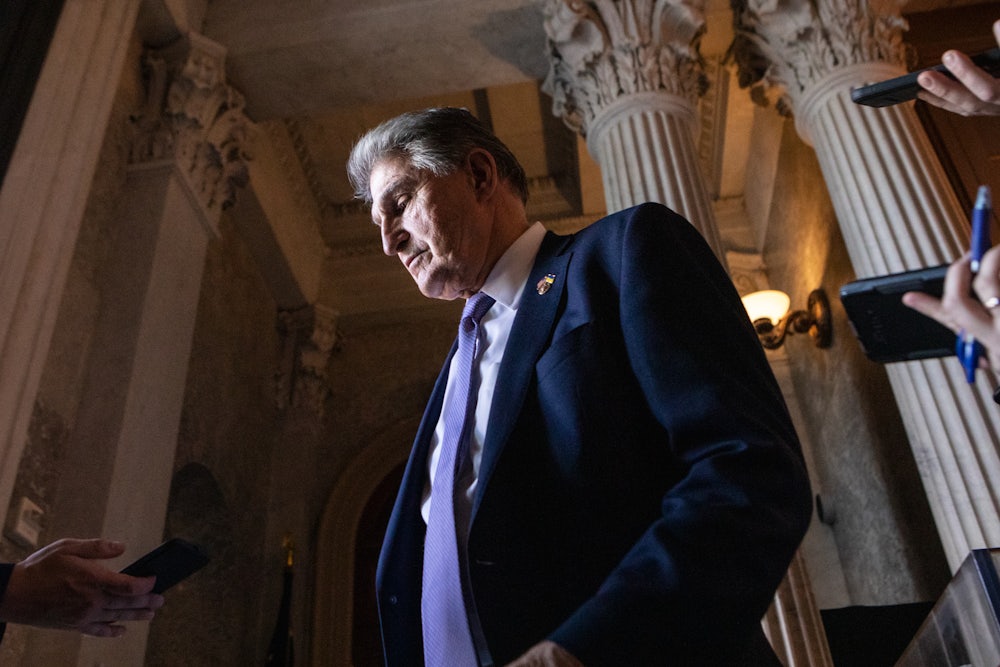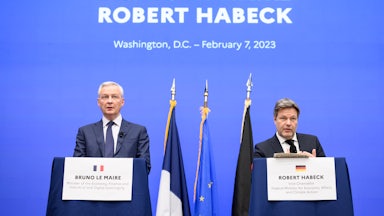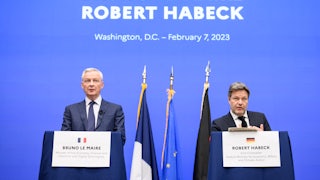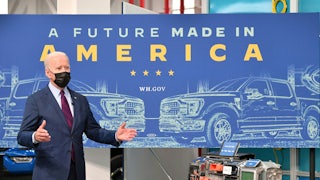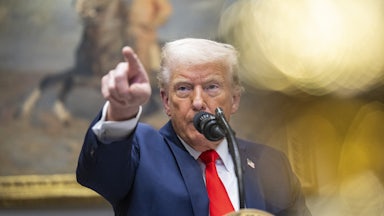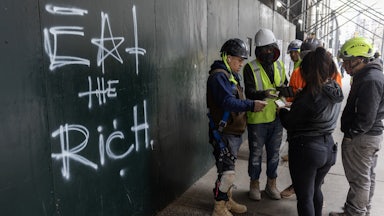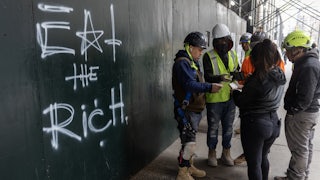The Inflation Reduction Act has been lauded by President Joe Biden and congressional Democrats as the most significant climate legislation in American history. But some provisions of the massive new law have proven difficult to implement, with implications for individual consumers, companies, and countries alike.
On Friday, the Treasury Department outlined new guidance for how automakers can determine whether their electric vehicles, or E.V.s, qualify for a $7,500 tax credit that was restructured by the Inflation Reduction Act. The credits are intended to incentivize the purchase of E.V.s and thus help the United States reach its emissions-reduction targets. However, that aim is in immediate tension with another goal of the Inflation Reduction Act, which is to boost the production of E.V.s and their components in the U.S., in so doing strengthening the American supply chain and decreasing our reliance on China.
“If this was just about climate, it wouldn’t matter where everything came from,” said Nick Nigro, the founder of Atlas Public Policy, an E.V. consultancy firm. “This bill is trying to strike that balance and bring more of the supply chain and manufacturing of the technology to either the United States or our close allies, and away from countries that don’t share our values.”
The guidelines released by the Treasury Department would enforce the requirements outlined by the Inflation Reduction Act mandating that a certain percentage of critical minerals and battery parts for E.V.s be sourced in the U.S. While dozens of vehicles are currently eligible for the full credit, that number is likely to reduce under the stringent sourcing requirements, as many automakers still source components from China.
The Biden administration insists that it will help the U.S. reach its emission goals as well as secure the domestic clean energy supply chain in the long term. “We believe these requirements will significantly increase the number of vehicles made and sold in the U.S. over the next decade as new investments and American production come online,” a senior Treasury official told reporters last week in a background call. The rules will be formally published on April 17, with an updated list of qualifying vehicles eligible for the subsidies released the following day.
John Bozzella, the CEO of automaker trade group the Alliance for Automotive Innovation, contended in a Friday blog post that because fewer vehicles will qualify for the credit going forward, 2022 may be the high-water mark for E.V. sales for the foreseeable future. But “given the constraints of the legislation, Treasury’s done as well as it could to produce rules that meet the statute and reflect the current market,” Bozzella wrote.
Under the Inflation Reduction Act, a vehicle would be eligible for the subsidy if it is assembled in the U.S. At least 50 percent of its battery components must also be made in the U.S., and at least 40 percent of the battery’s critical minerals sourced domestically or in a country with a free trade agreement. Those percentage requirements will increase annually, requiring the full battery to be made in North America after 2028. (Vehicles qualify for half the credit if they meet either the battery component or critical minerals requirements.) The U.S. does not currently have the supply infrastructure necessary for all automakers to meet those requirements, although companies are working to build more mines and battery factories in the country.
The Treasury Department slow-walked the implementation of the sourcing requirements, allowing the credit to go into effect without restrictions for three months. This angered one of the authors of the Inflation Reduction Act, Senator Joe Manchin, who has called for a stricter interpretation of the requirements as written in the law. He has also taken umbrage with how the administration has interpreted the law’s requirements regarding how powders contained in an E.V. battery’s electrodes are sourced. Manchin threatened to sue the Biden administration last week before the new guidance was issued, and slammed the proposed rules as insufficient once they were released.
In a statement, Manchin said that the guidance did not follow the letter of the law and “completely ignores the intent of the Inflation Reduction Act,” the purpose of which is to “bring manufacturing back to America and ensure we have reliable and secure supply chains.” “It is a pathetic excuse to spend more taxpayer dollars as quickly as possible and further cedes control to the Chinese Communist Party in the process,” Manchin said. The centrist Democrat from West Virginia is currently mulling whether to run for reelection in a state that twice supported President Donald Trump by roughly 40 percentage points.
Other members of Congress expressed concerns about the proposal for other reasons: namely, the Treasury Department’s interpretation of which countries fall under the “free trade agreement” requirement for sourcing, as the term is not defined in the law. The Treasury guidance includes 21 countries and opens the door for more to qualify down the line. The Inflation Reduction Act initially caused some tension between the U.S. and the European Union, as there is no free trade agreement between the two governments; however, the U.S. and the EU are negotiating a narrow trade deal to allow European companies to qualify for benefits under the law.
GOP Representative Jason Smith, the chair of the Ways and Means Committee, argued in a statement that the guidance “negotiates fake trade agreements in secret without approval by Congress or consideration for the interests of American workers and taxpayers.” Republican Senator Marco Rubio said in a statement that the proposal “does nothing to change the failed status quo.” But Democrats also expressed frustration with the proposal.
“The administration’s guidance bypasses the intent of Congress when we passed the Inflation Reduction Act by redefining our understanding of a free trade agreement,” said Representative Suzan Delbene in a statement last week. She referenced a new agreement with Japan on E.V. battery minerals, resulting in the country’s inclusion under the “free trade agreement” umbrella in the Treasury guidance. “The administration’s recent deal with Japan on critical minerals, no matter its merits, undermines Congress’ constitutional authority to regulate foreign commerce,” Delbene continued.
The Treasury guidance also dictates that eligible vehicles may neither include any battery components manufactured by a “foreign entity of concern” beginning in 2024, nor contain any battery minerals “that were extracted, processed, or recycled by a foreign entity of concern” beginning in 2024. The term “foreign entity of concern” is not defined, although the department said there would be “subsequent guidance” on that provision. Given that this proposal is intended to end China’s growing monopoly on battery component production and mineral sourcing, it’s a good bet that China will be considered “of concern.”
“China was an early leader in E.V.s, and tried to capture as much of the supply chain as they could, particularly as it relates to batteries. Many in the policy community in D.C. believe that that’s not in the strategic interests of the U.S., and U.S. policy,” Nigro said. “They don’t want to trade a dependency that we currently have on oil-rich countries in the Middle East for a dependency on China for batteries.” Recent administration guidance for another law passed last year, the CHIPS and Science Act, names China, Russia, Iran, and North Korea as “foreign entities of concern.”
After the proposal is formally published later this month, it will kick off a 60-day period of public comment. The Treasury Department will then issue its final guidance. Although the number of E.V.s eligible for the tax credit may dip dramatically, Nigro predicted that automakers would price their vehicles to be competitive with those that do qualify for the subsidy and that they would prepare for when the increasingly stringent requirements are implemented.
“It behooves them to [have] the endgame in mind when they make their investment decisions, because five years from now is tomorrow in that industry,” Nigro said.
